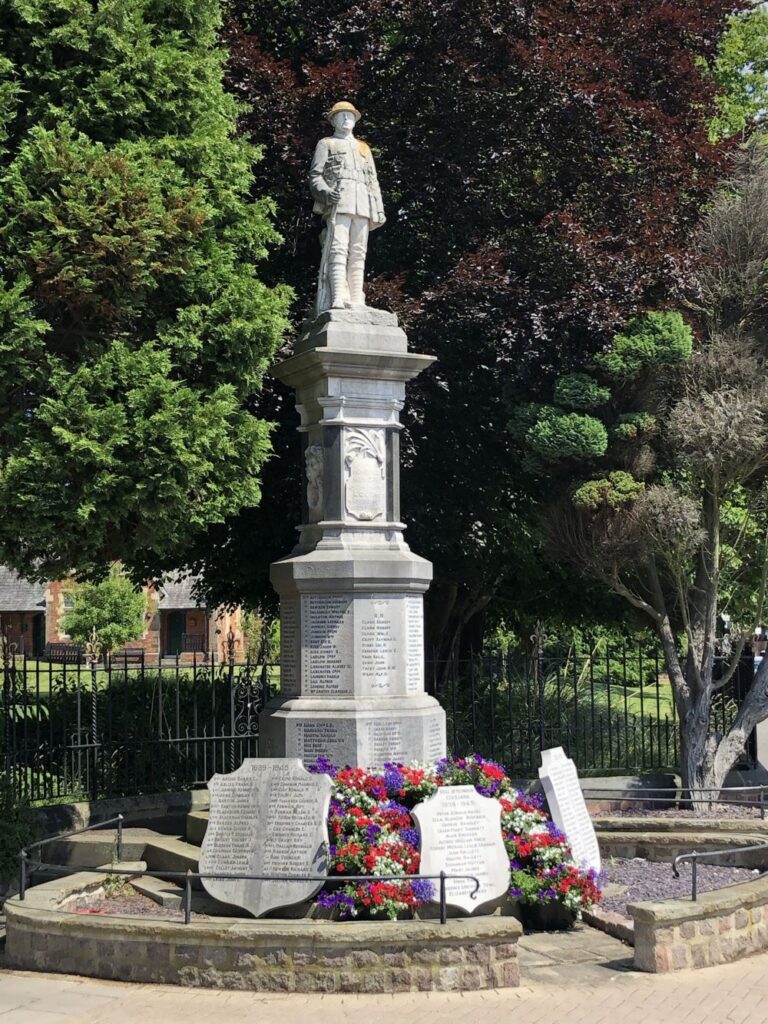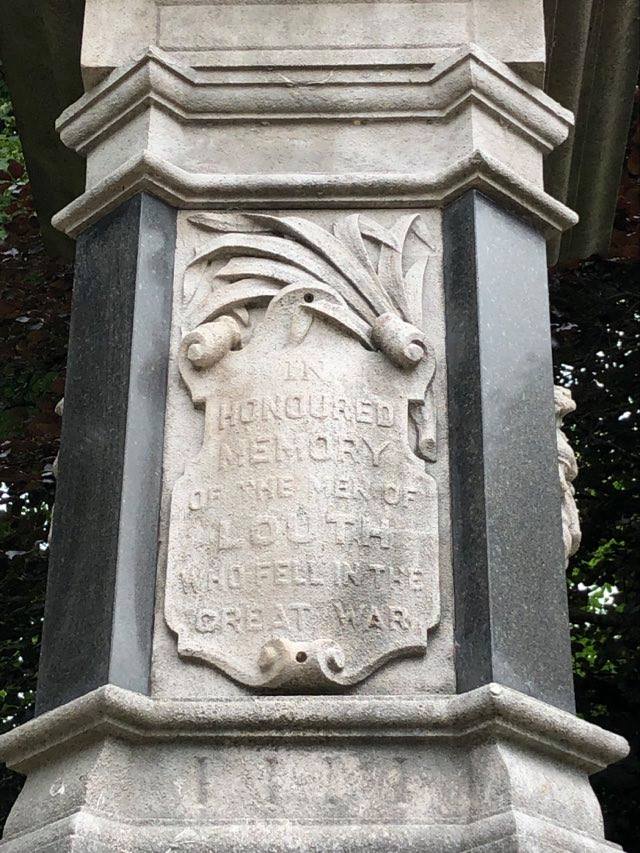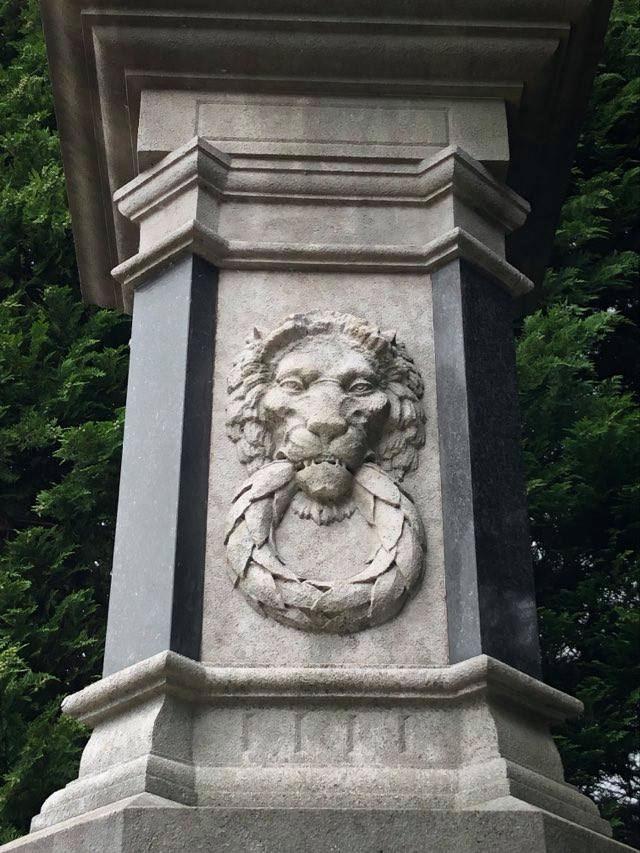The Louth War Memorial
War memorials form an important part of our cultural heritage and are a poignant reminder of the tragic impact of war. In World War I, all communities sent people off to fight and work, and they virtually all suffered losses. No greater wave of public remembrance has ever been known in history.
The Louth War Memorial, Grade II Listed, was erected in 1921 and stands, keeping watch, at the corner of Ramsgate and Eastgate on land that originally formed part of the Almshouses garden.
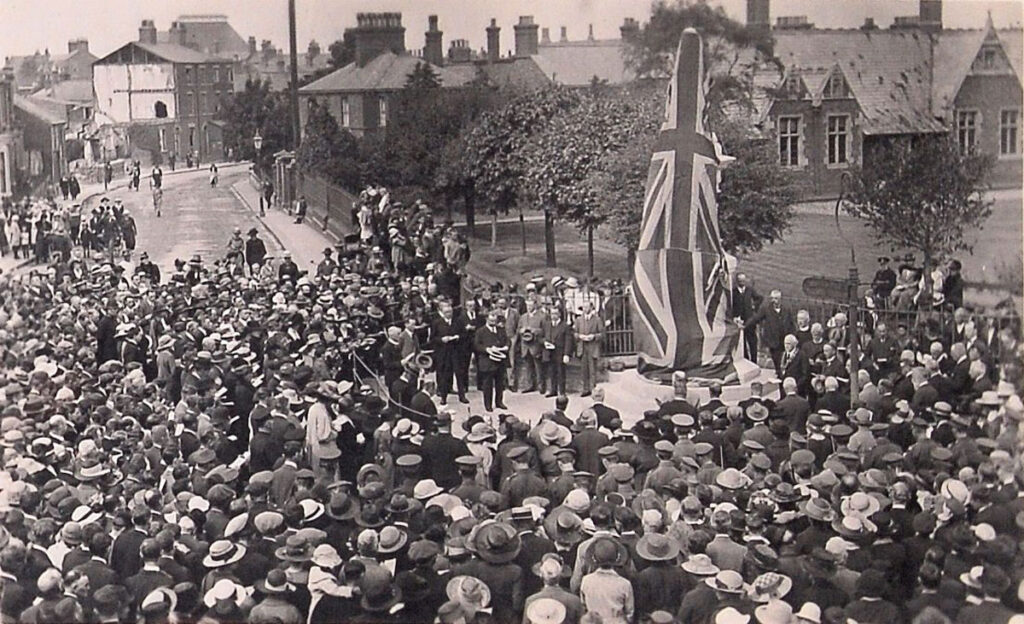
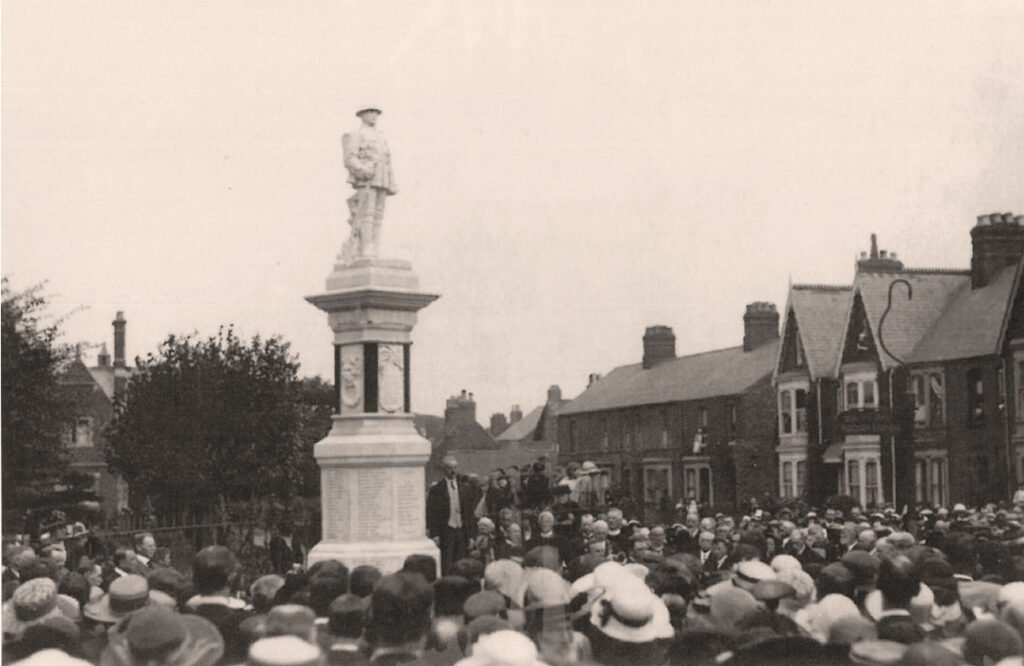
A Memorial for the Great War
Louth’s War Memorial came about following the end of the Great War (1914-1918), or World War I as it later became known, in the wake of the nation’s widespread grief. In April 1919 the Mayor of Louth led a public meeting where the people of the town decided that they wished to raise enough money by public subscription to honour those who had died.
The war memorial was designed by architect Harold Saunderson Hall, son of Louth baker Alfred Hall and was built by stone mason William Samuel Harrison of Ramsgate. The elaborate but short pillar, octagonal plinth and three-stepped base has the 209 names of those who died in the Great War carved and leaded into the panels.
Most of the memorial is built from Hopton Wood limestone, but the steps leading up to it are thought to be of York stone. Half-way up the memorial the scroll at the front reads ‘In honoured memory of the men of Louth who fell in the Great War’ and at the rear of this section are the names of battles fought both on land and at sea: Falkland, Jutland, Mons, Marne, Somme and Ypres. A lion’s head with a wreath looks out on the other two faces and the four sides are separated with angled columns of polished black granite.
The soldier on the plinth is ‘at least six feet in height’. Standing against a tree stump holding a rifle in his right hand in the at ease position, he was sculpted by Mr Robert William Ray of Fotherby. The original model was unknown until his daughter gifted his medals and photographs to the Louth Royal British Legion in the late twentieth century. The photographs show Regimental Sergeant Major George Frederick Jones posing in full service uniform and holding a Lee-Enfield rifle, almost exactly as he appears on the memorial. Sergeant Major Jones of the South Staffordshire Regiment, born in Wolverhampton in 1885, was stationed in Louth; he served throughout the 1914-18 war.
On 4th August 1921, the anniversary of the declaration of war in 1914, Louth’s memorial, which cost £1106/3/8d, was unveiled by the High Steward of the Borough, Major John St. Vigor Fox. An audience of hundreds of people gathered to watch the ceremony and dedication, and to pay tribute to the fallen.
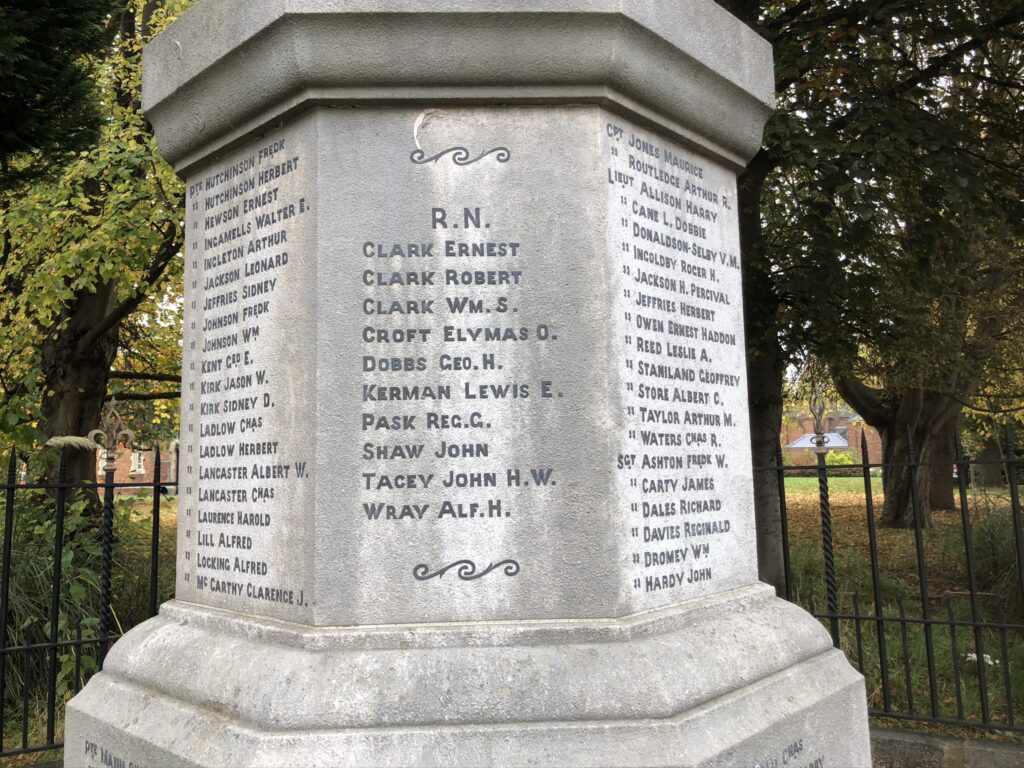
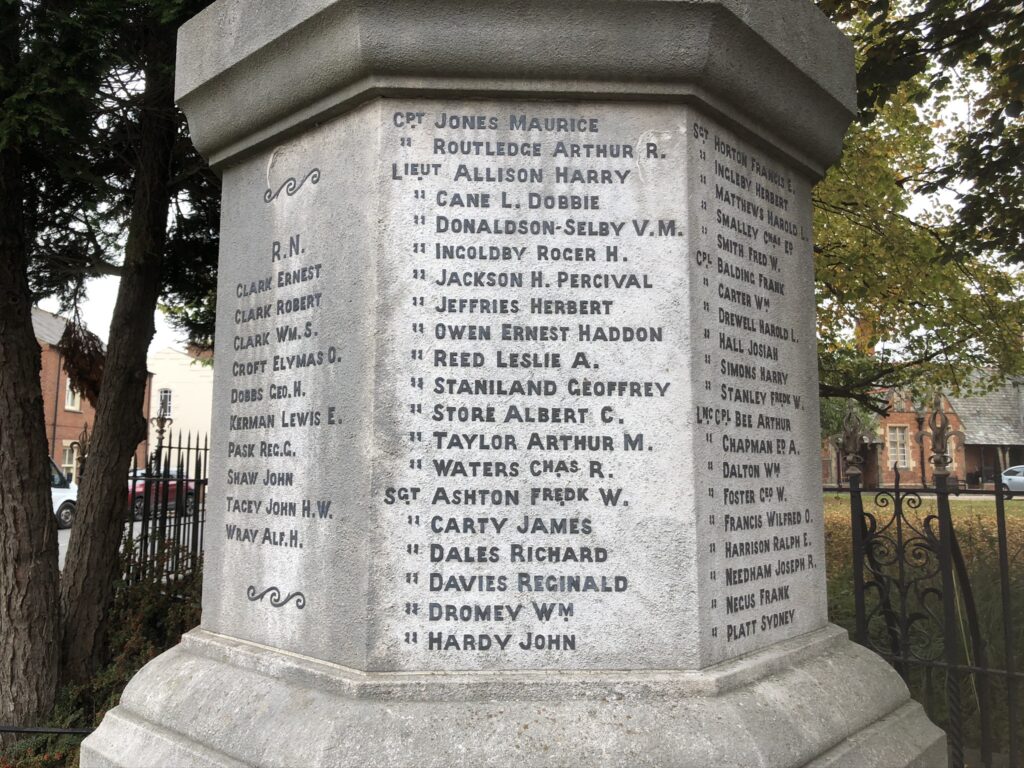
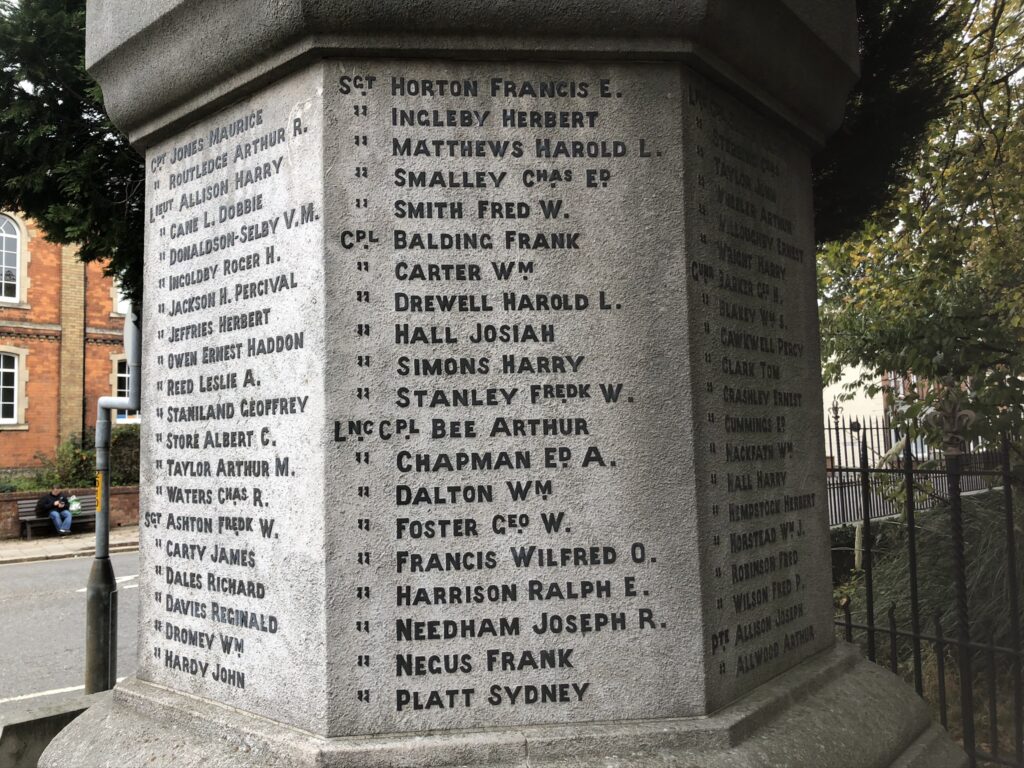
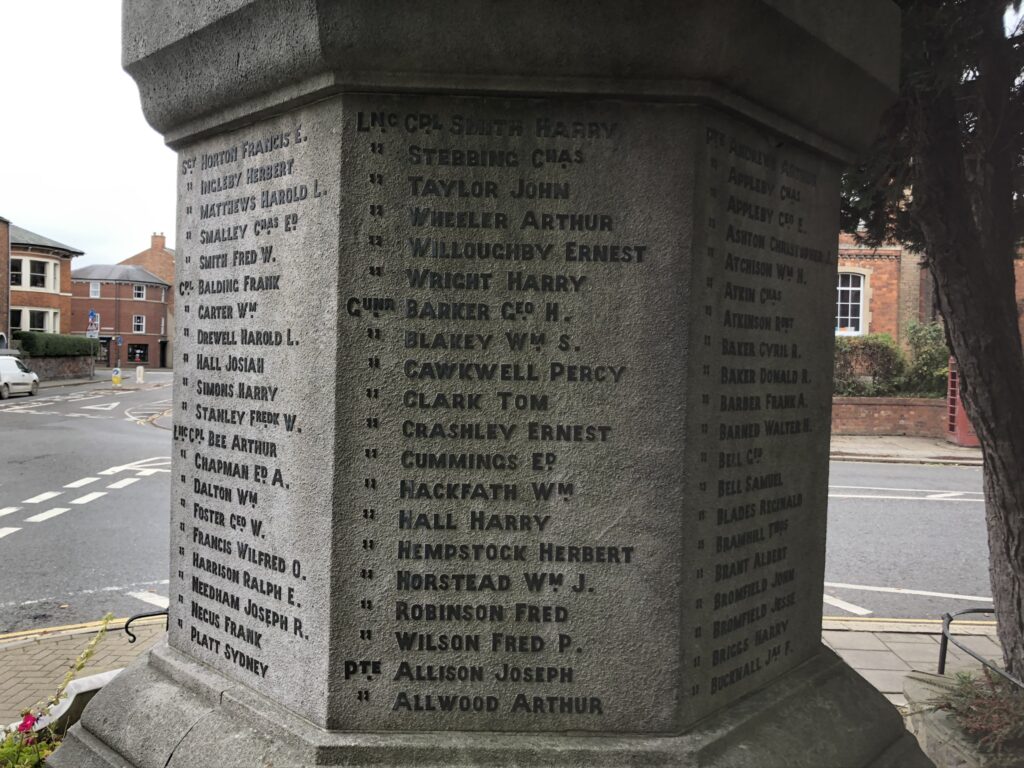
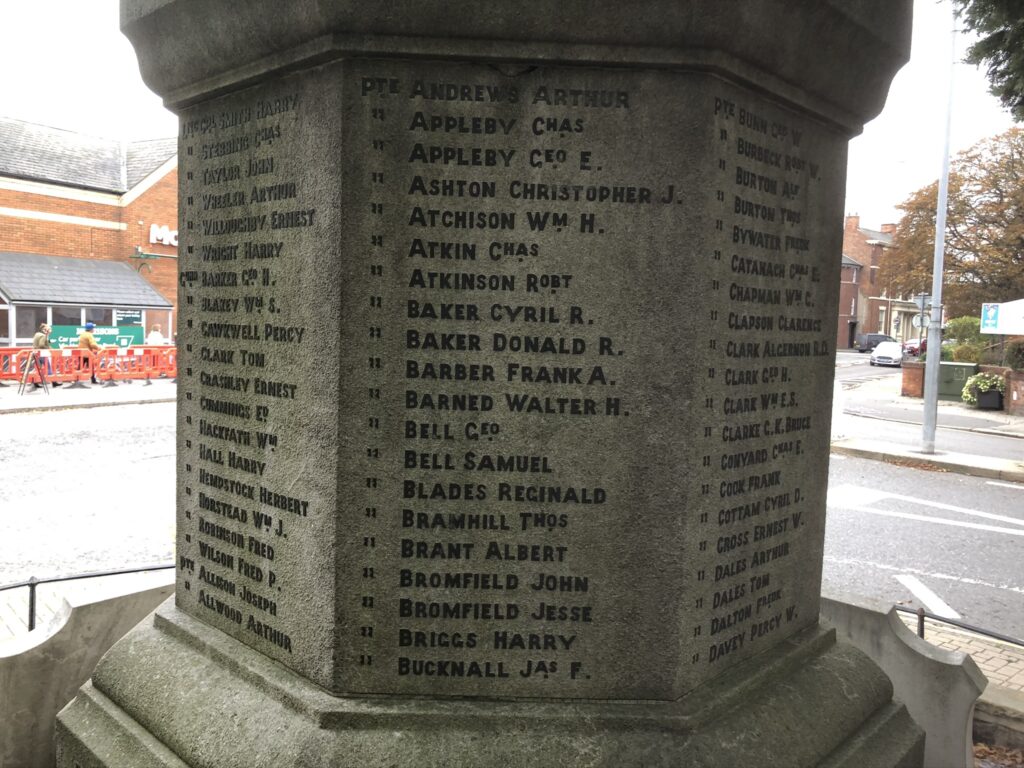
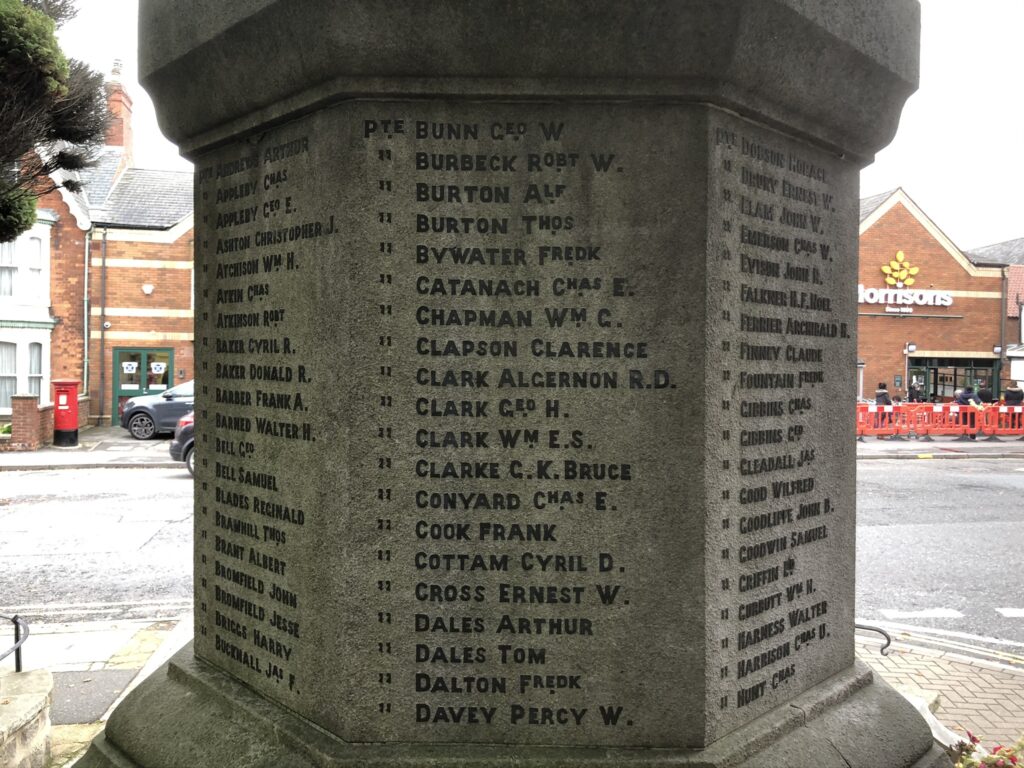
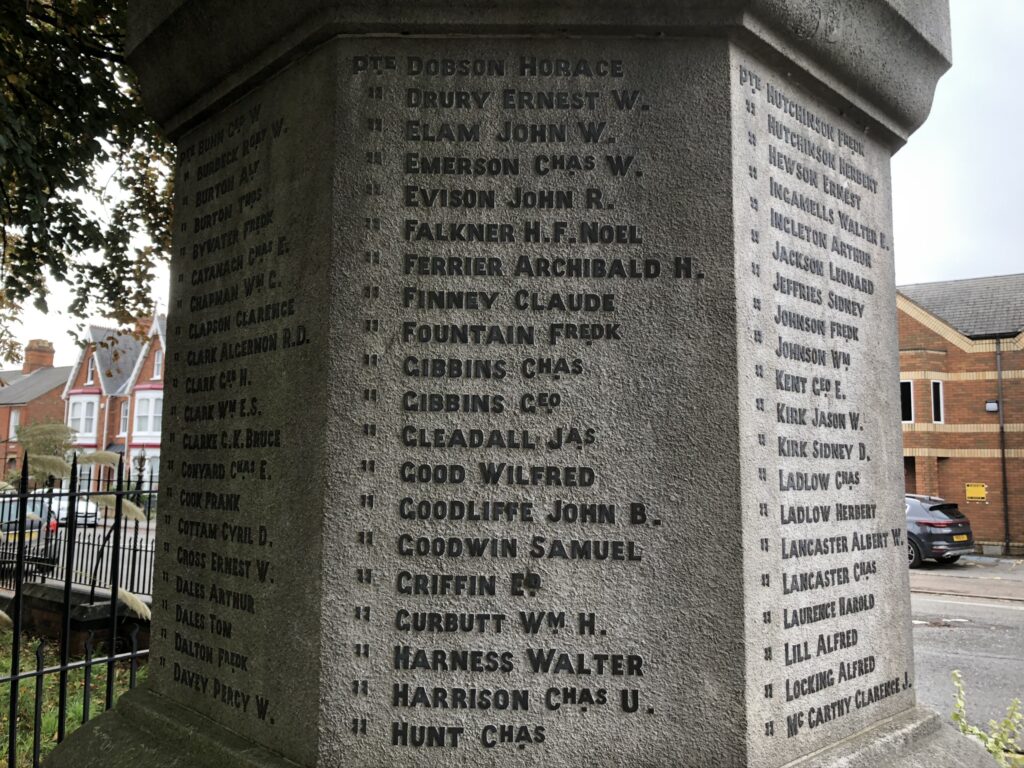
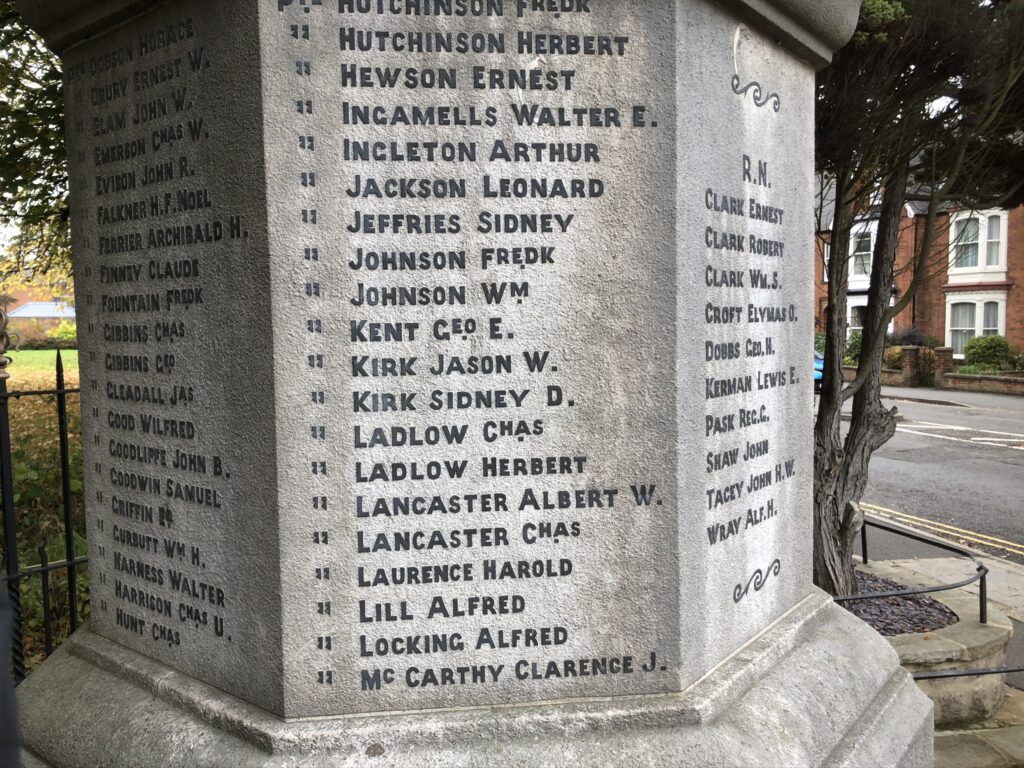
The 14 panels listing the 209 names of those who died in the Great War
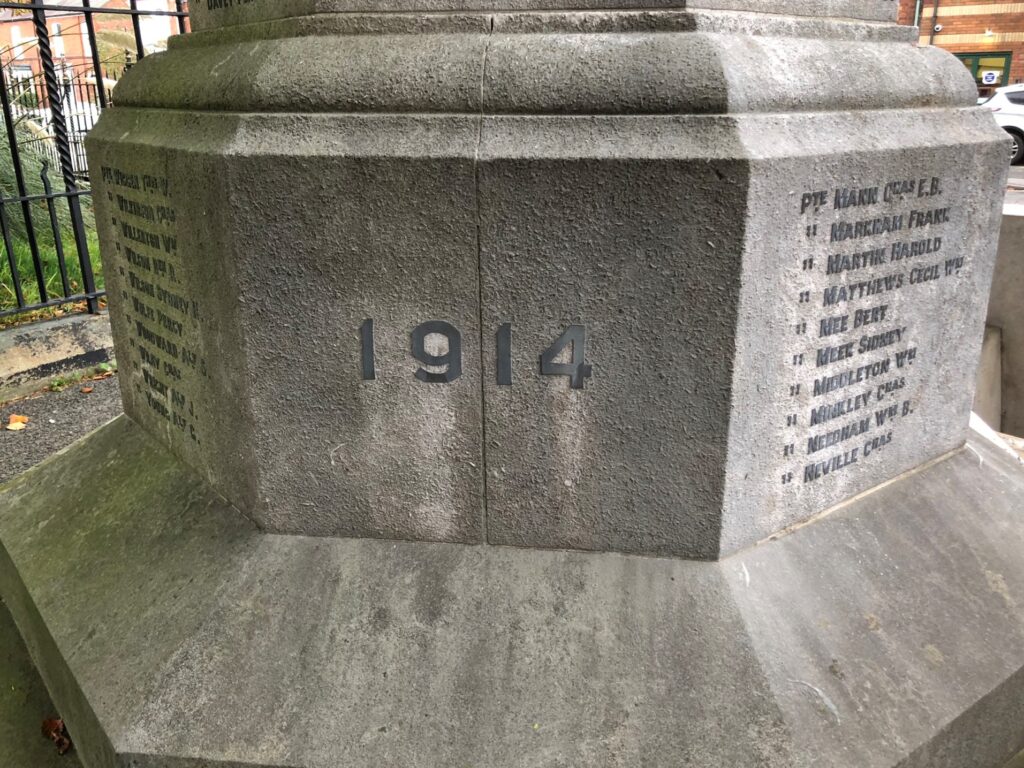
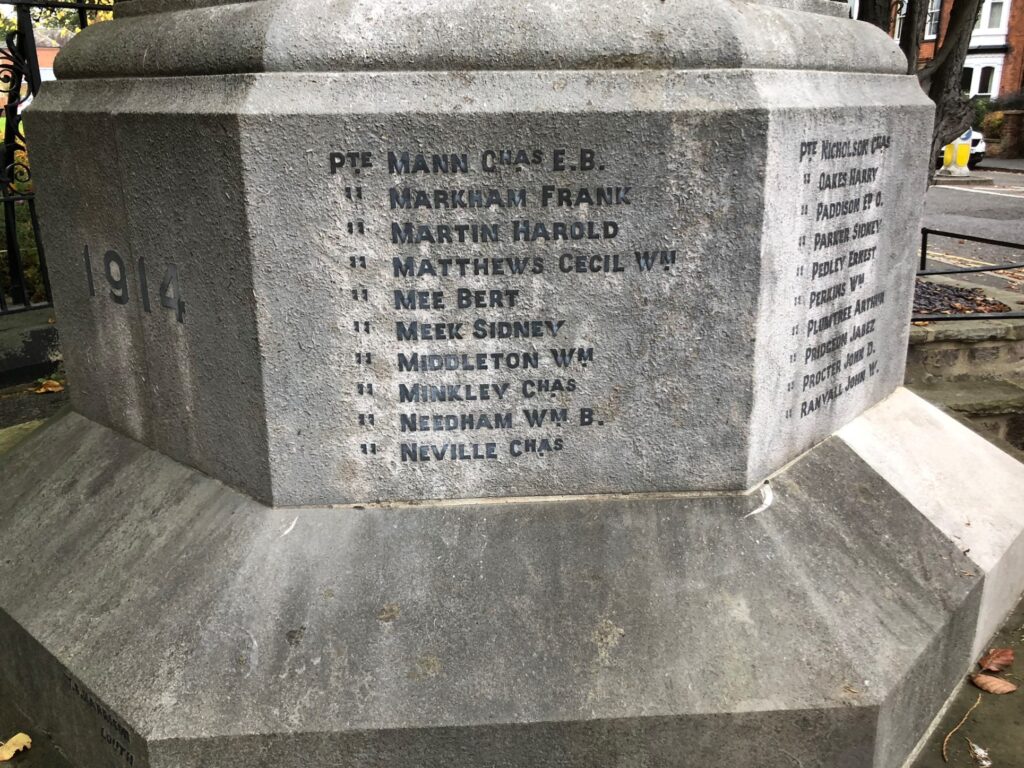
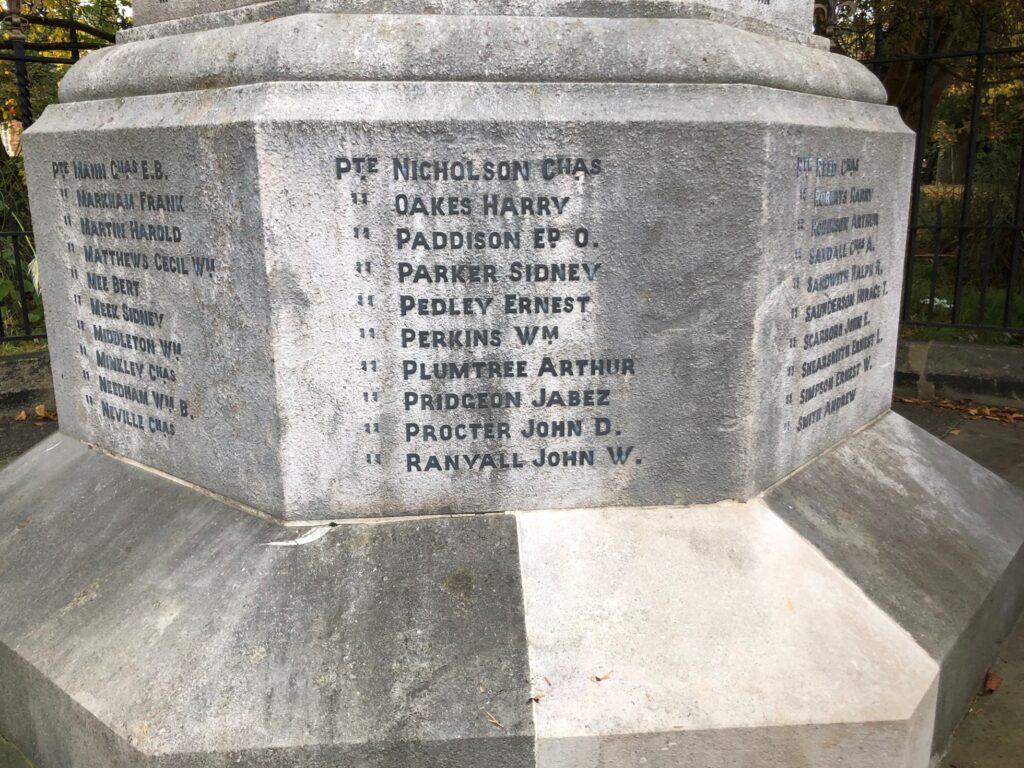
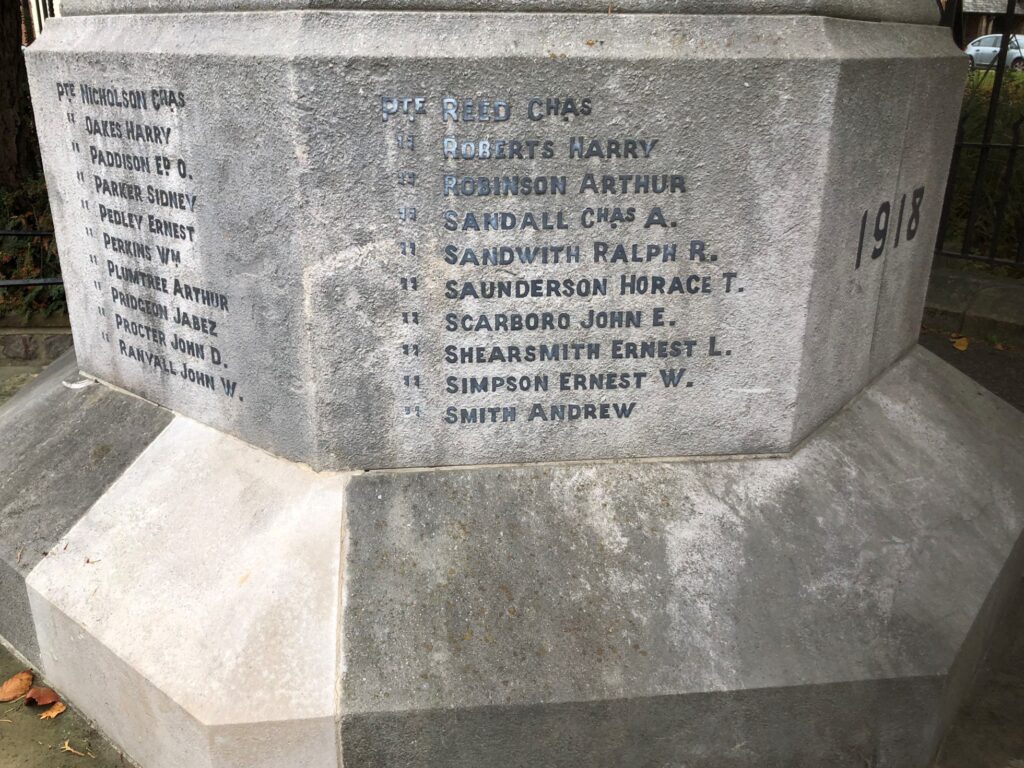
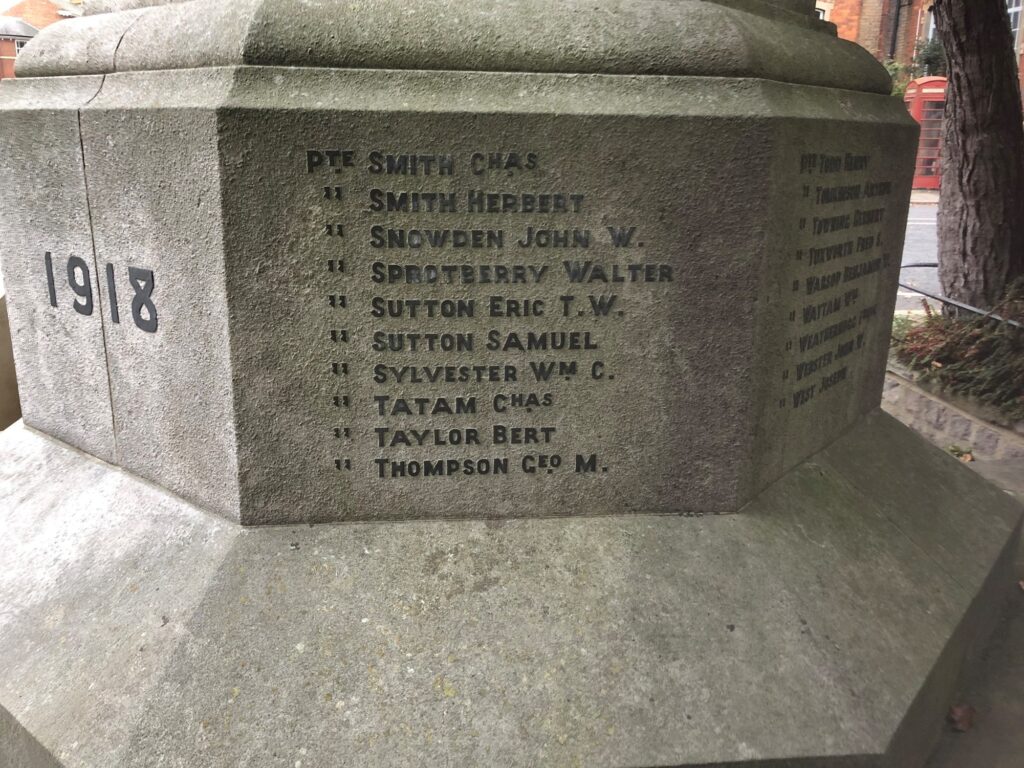
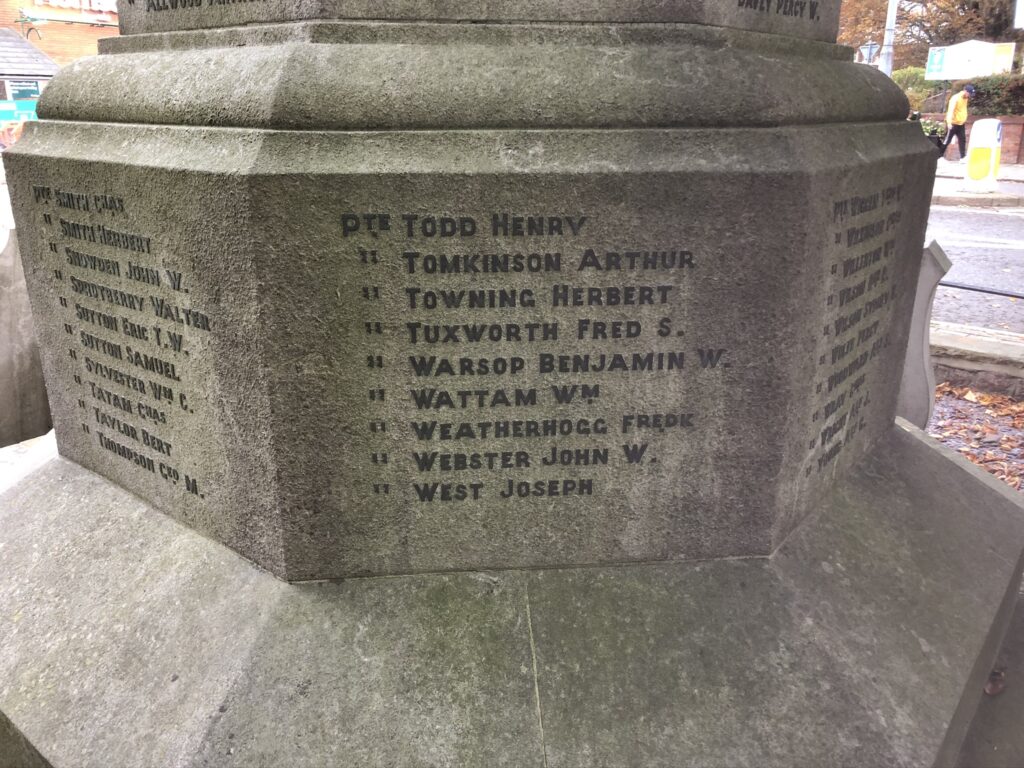
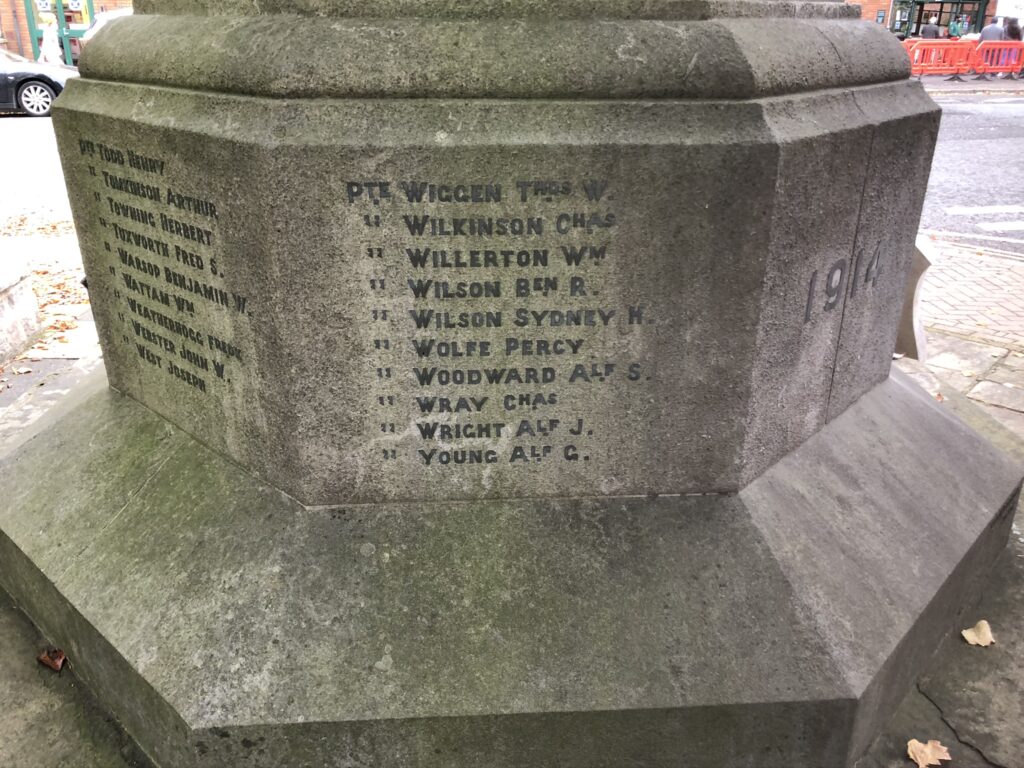
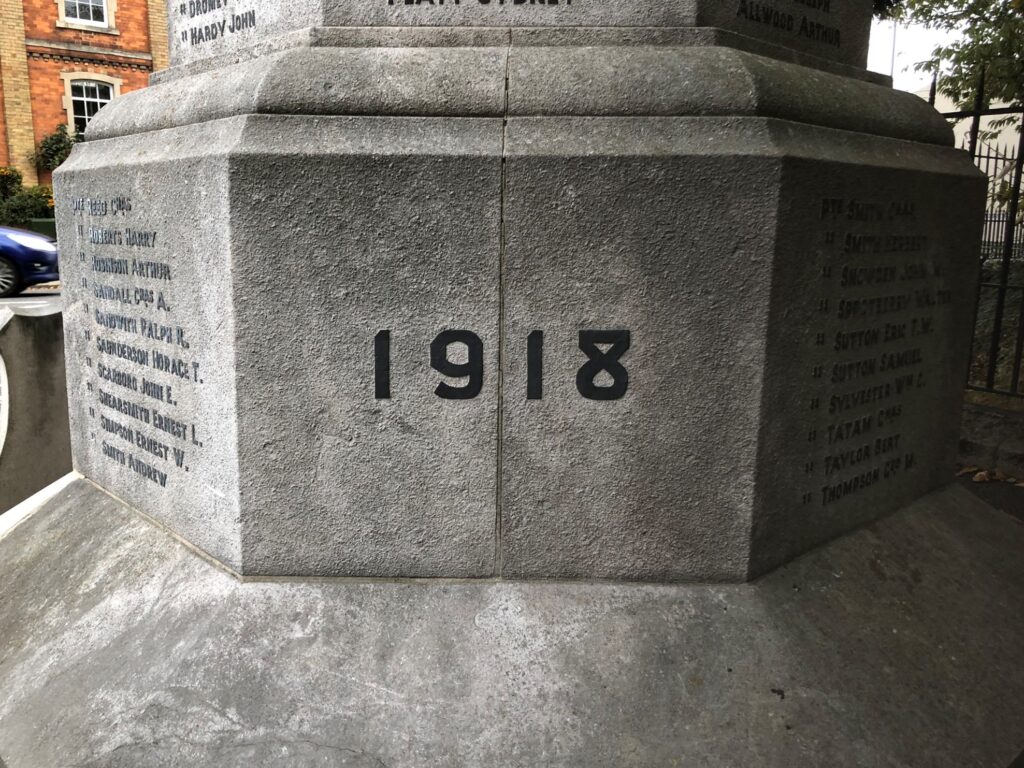
World War II
On 12th October 1952 The British Legion invited Major James Heathcote-Drummond-Willoughby, Earl of Ancaster, to unveil two new shields, a memorial to those who gave their lives in World War II listing the names of the 77 World War II military casualties. During the ceremony the memorial was re-dedicated by the Rev. Ward and Rev. Gibson. The shields were also made by W.S. Harrison, (who made the original War Memorial), from Hopton Wood limestone.
A third shield was added a short time later listing 15 civilians who were also killed, 13 of whom died in two separate incidents on Ramsgate and Grimsby Road in February and September of 1941.
Acc 206 Louth memorial for World War II unveiled
Archive film clip courtesy of Lincolnshire Film Archive www.lincsfilm.co.uk
More film of Louth featured in their DVD Louth Looks Back, available from here: https://www.primetimevideo.co.uk/collections/archive/products/louth-looks-back-dvd-046
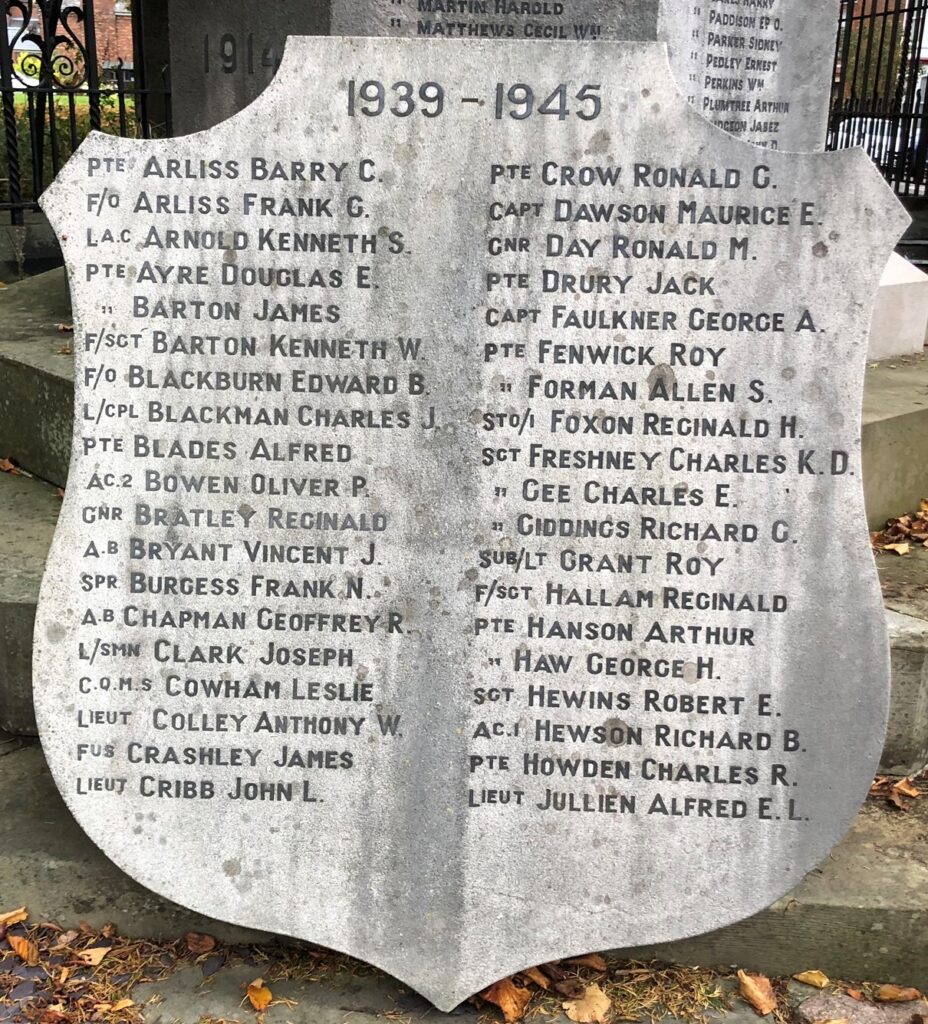
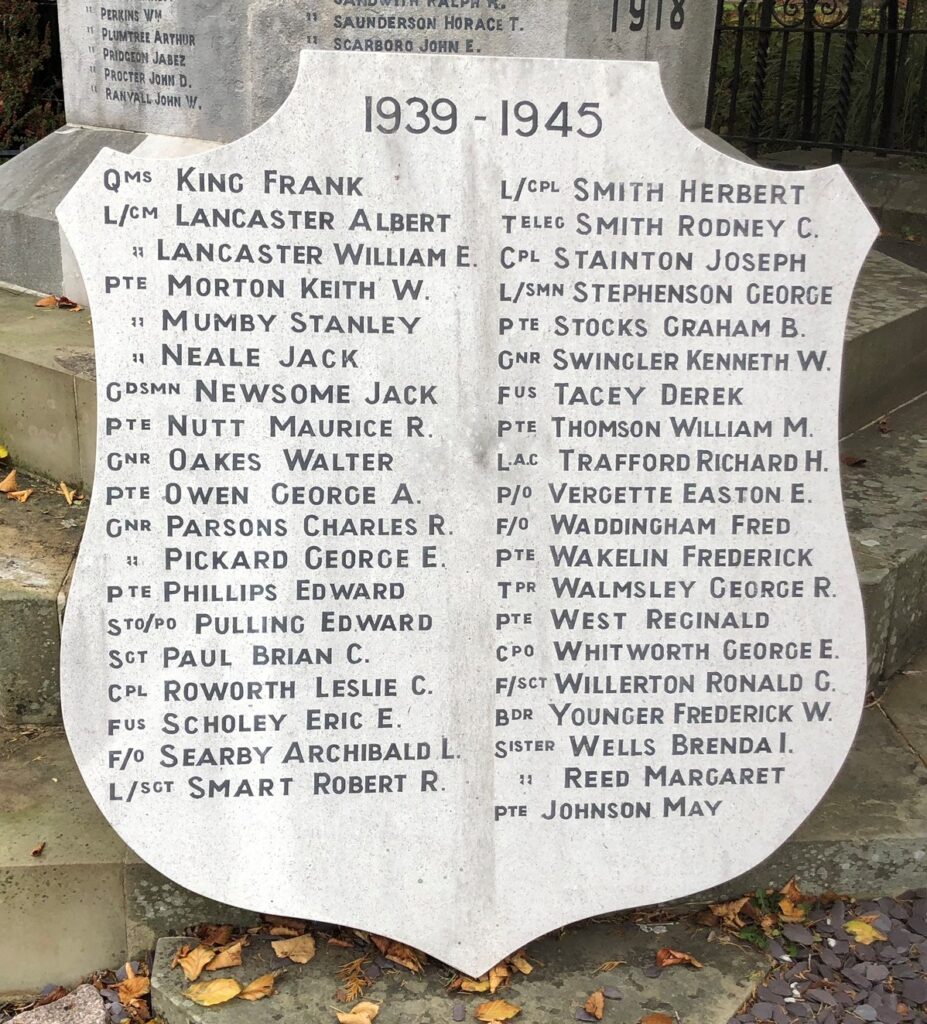
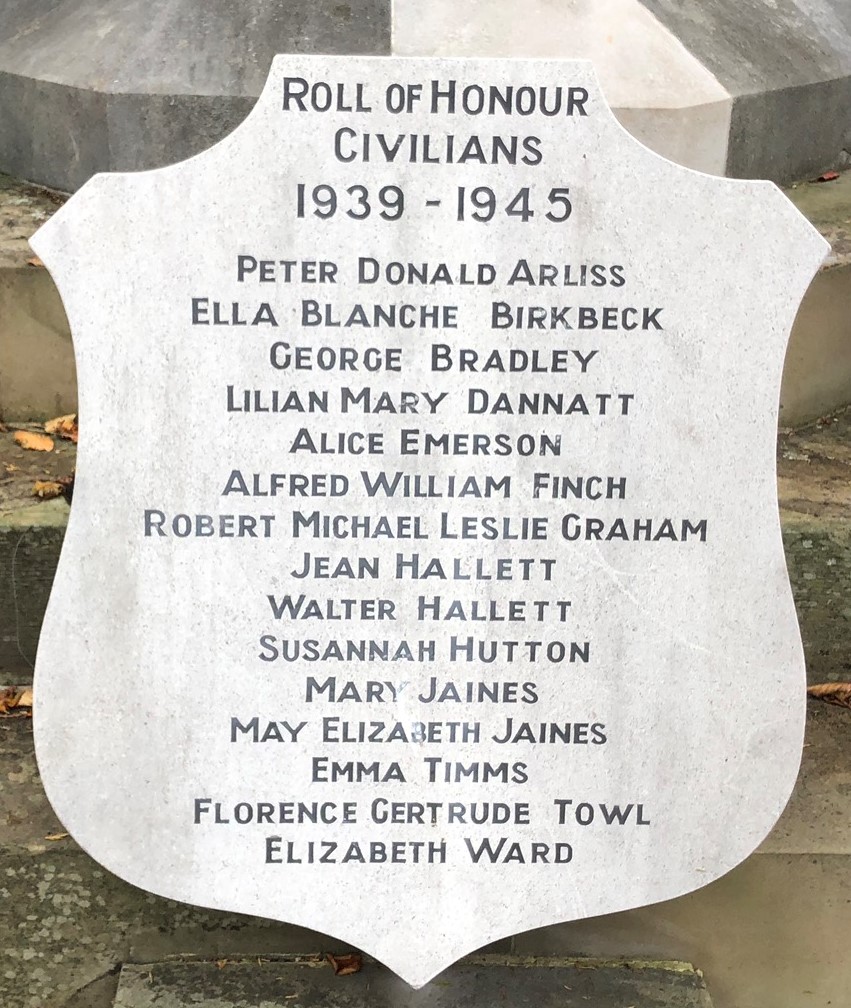
Recent History
On November 11th 2006, following cleaning, much of it funded by public donations, the memorial was again re-dedicated by Canon Holdaway, Rector of St. James’ Church.
Memorial Given Listed Status
On 8th November 2013 the War Memorial was given Grade II Listed status for the following reasons:
a) Historical interest: it is a moving reminder of the impact on the community of two World Wars and of the sacrifice suffered. The identification of the model for the soldier depicted, Regimental Sergeant Major George Frederick Jones, is of additional historical interest, as is the inclusion of the names of civilians killed in Louth in the Second World War.
b) Design and presence: its design is powerful, detailed and considered, and its height and position on the corner of Ramsgate and Eastgate gives it prominence in the Louth streetscape.
Serious Damage at the War Memorial
Less than two years after being listed, calamity struck on Sunday 15th March 2015 when a vehicle crashed into the memorial causing significant damage to the wall, tree, lights and two of the shields which were broken beyond repair. As an interim measure, two temporary replacement shields were put in place until new shields could be carved from Hopton Wood limestone. The new shields were placed onto the Memorial in November 2015 in readiness for Remembrance Sunday.
Leading up to the 100th Anniversary of the War Memorial, a number of other significant anniversaries were celebrated, such as the 75th Anniversary of VE Day (8th May 2020), the 75th Anniversary of VJ Day (15th August 2020), Remembrance Sunday (8th November 2020) and Remembrance Day (11th November 2020). Due to the Coronavirus Pandemic, commemoration ceremonies had to be scaled back, but included the laying of a wreath, by the Mayor, in memory of those who died on each occasion.
With many thanks to: Ruth Gatenby (Louth Museum), Dr. Richard Gurnham, Paul Sheppard and The British Newspaper Archive for supplying photos and information.
